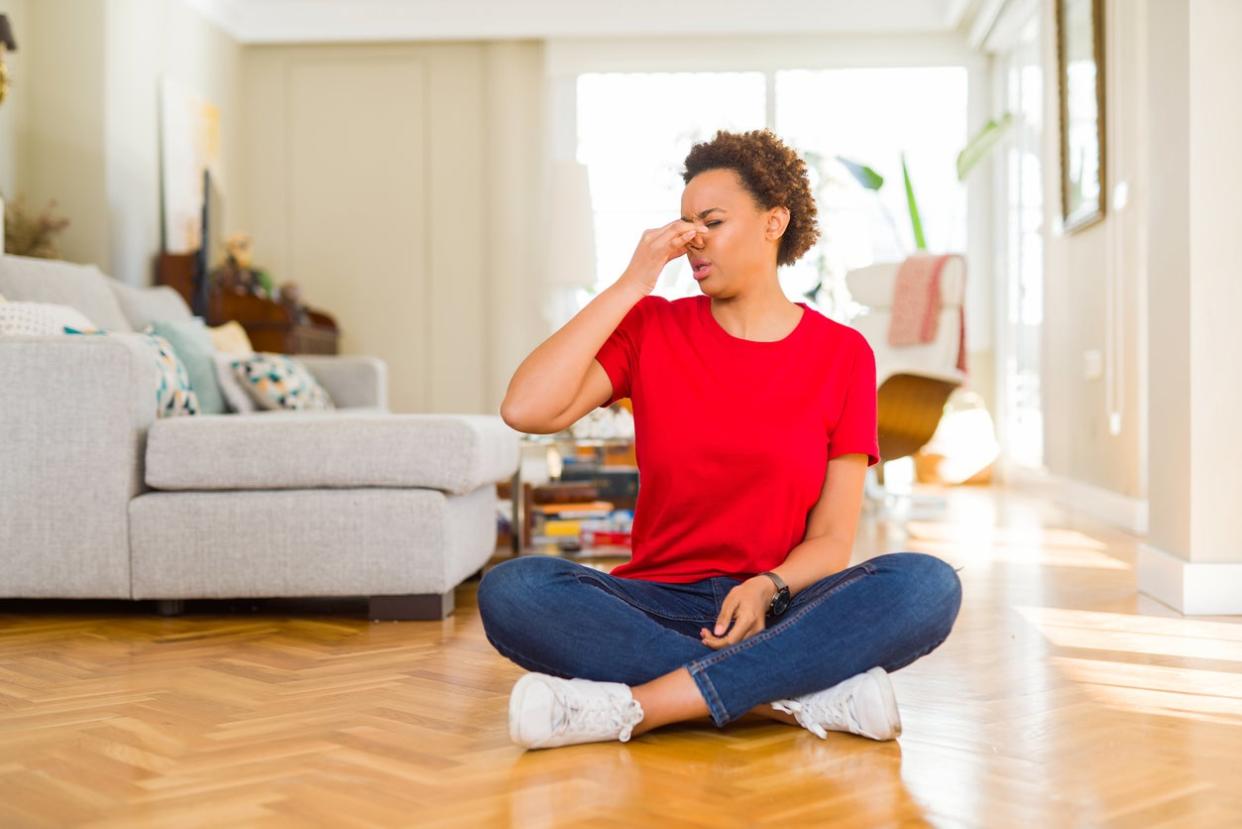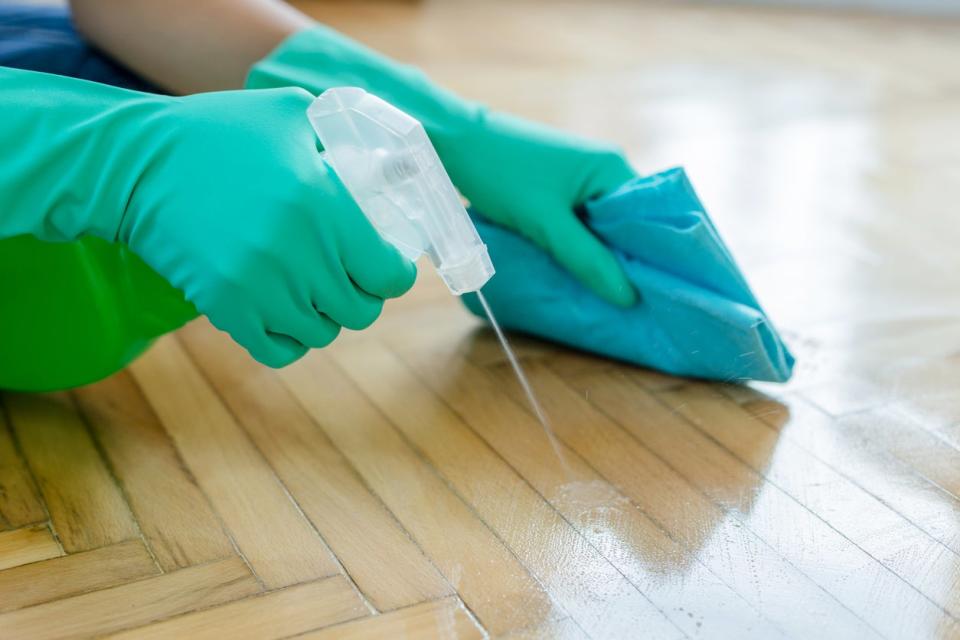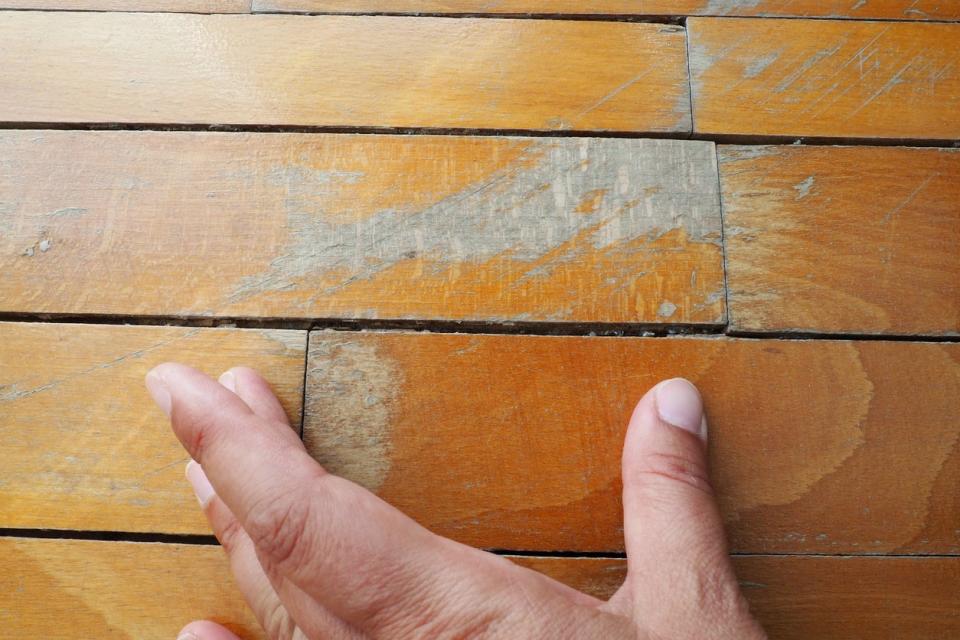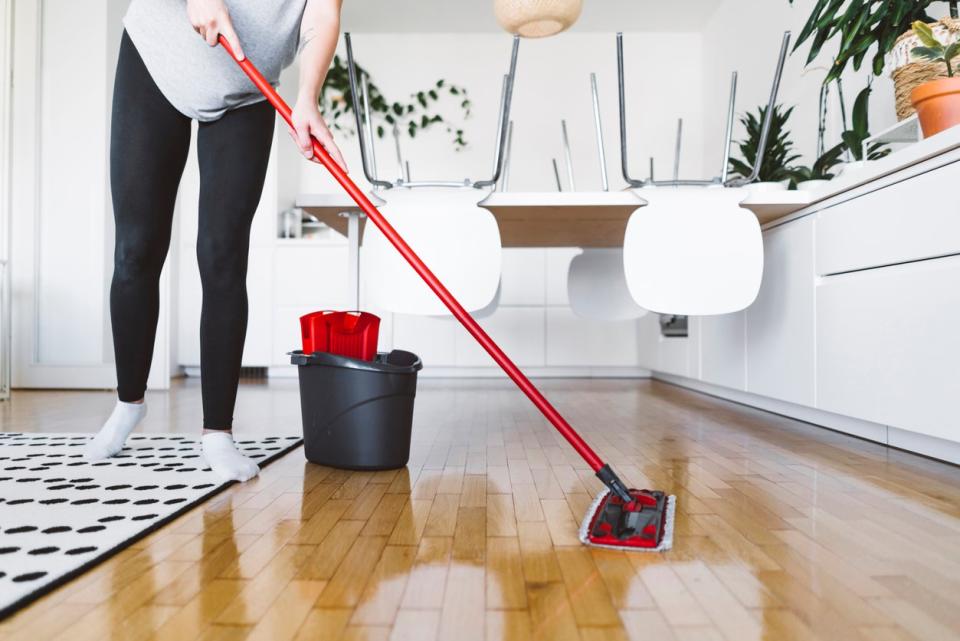5 Sneaky Signs of Mold Under Hardwood Floors

Q: Lately I’ve noticed some discoloration in my floors and a strong musty smell. Could these be signs of mold under my hardwood floors? If so, who should I call or what should I do to treat the mold?
A: Discoloration and a musty smell are two very common signs of mold under hardwood floors. But before prying up boards to see what’s underneath, it’s a good idea to investigate to see if other common signs of mold are present. Visible spores and texture changes on the surface of the flooring are further indications of mold under hardwoods, and homeowners may even experience mold exposure symptoms such as sneezing and skin rashes. For those who suspect that there is mold growth lurking under their floors, the next step is to call one of the best mold removal companies (such as ServiceMaster Restore or ServPro) to perform an inspection and provide a treatment plan to get rid of the mold for good. If the floors have been damaged beyond repair, one of the best flooring companies can refresh the space by installing brand-new hardwoods.
What causes mold under hardwood floors?
In every case of mold on wood floors, there’s one common denominator: moisture. This can come in the form of a water leak, high humidity levels, steam, spills, or condensation. Because wood is porous, it is more susceptible to mold growth than other flooring materials, such as tile. Homeowners will want to be vigilant about water leaks, as even a small amount of undetected moisture can seep into the cracks of flooring. Under the right conditions, water under the floor can lead to mold growth in as little as 24 to 48 hours. Homeowners can look out for a few key signs that mold is growing beneath a home’s flooring, but the only surefire way to know for sure is to pull up the boards and use one of the best mold testing kits or hire a professional remediation company to perform an inspection.

Photo: istock.com
One of the earliest signs of mold under hardwood floors is a musty odor in the affected room.
Mold has a very distinct smell that’s often hard to get rid of once it presents itself. When mold is just starting to form, the smell of mold is a slightly earthy, stale scent that lingers until it’s treated properly. This smell is produced by the formation of microbial volatile organic compounds (MVOCs) and may be the first detectable sign of mold after spores have started to develop. Different types of mold, however, can have different odors, and this can help with identifying which kind might be growing in the home. For example, black mold smells like rotting leaves or a musty basement, while other types can smell more like sweaty socks.
Discoloration or stains may become visible as the mold growth progresses.
Another common sign of mold is discoloration in the flooring, which is a result of mold enzymes breaking down the material it has grown on. The once-uniform floors can start to look bleached or water stained, or visible signs of mold spores can show up on the outside. Mold on hardwood floors may take the form of spores that look like green, blue, and black spots clustered together. Over time, these spots may also spread to the surrounding walls, floor molding, or baseboards. The bottom line is that physical changes in the flooring are a strong indicator that mold is present and needs to be treated before the mold spreads and causes further damage.

Photo: istock.com
Homeowners may also notice a change in the texture of the surface of the floorboards, or that the finish is beginning to flake off.
Most hardwoods are sealed with a finish that repels water and guards against stains and scratches. While the finish on hardwood flooring can protect the wood’s surface, when mold growth infiltrates from underneath the floorboards, this can cause the bond between the wood and the finish to deteriorate. When this happens, homeowners may notice that the surface of their hardwoods appears to be flaking or peeling off. Not only is this a sign of a major mold issue, but it can also make the wood more vulnerable to other forms of damage.
Since mold forms as a result of excess moisture, signs of water damage such as warping or cupping can point to potential mold growth under hardwood floors.
Wood is a porous material, which means it can absorb and release moisture. When wood floors are exposed to moisture, whether from a leak, flooding, or high humidity, the wood absorbs the water, which can lead to uneven surfaces. If this happens, floor planks may start to warp so that there are visible gaps between the boards. Water damage can also cause cupping, which is when the center of the floorboards becomes indented, giving the flooring a wavy appearance. Warping and cupping are tangible signs that something is amiss—they suggest that the wood is absorbing moisture, and where there’s moisture, mold is probably not too far behind. If there has been extensive water damage from an event such as a roof leak or burst pipe, it’s a good idea to have one of the best water damage restoration companies (such as ServiceMaster Restore or ServPro) treat the home.

Photo: istock.com
Finally, exposure to mold lurking under floorboards can cause the home’s residents to experience allergy-like symptoms such as sneezing and skin rashes.
Besides the havoc mold can wreak on the physical structure of a home, it can also affect the health of the home’s residents, especially those with upper respiratory issues. Because mold produces allergens and irritants, it can lead to a number of symptoms that are problematic for those who are sensitive to mold exposure. According to the U.S. Environmental Protection Agency, some of the most common mold symptoms include:
Sneezing,
Runny nose,
Red eyes,
Skin rash, and
Asthma attacks.
Black mold on floors can be especially harmful. The Cleveland Clinic warns that exposure to black mold can cause shortness of breath and chest tightness, and it may even lead to fungal infections for those with compromised immune systems. The sooner mold can be treated in the home, the less likely it is to become a serious health hazard.
Homeowners who notice signs of mold under their flooring will want to schedule an inspection with a mold remediation company.
After noticing evidence of mold, it’s time to spring into action. For those who are unsure who to call for a mold inspection, a local mold remediation company is a good place to start. Not only can such companies confirm the presence of mold, but they can also differentiate between black mold versus wood rot or water damage versus mold, which can be difficult for the untrained eye. Depending on how pervasive the issue is, mold inspection costs may range anywhere from $299 to $1,014. The total cost depends on the size of the home, the location of the mold, the test type, and what type of mold is present. Once the inspection is complete, the remediation company can provide an estimate of the cost of mold remediation, which can range from $1,125 to $3,439.
Hardwood floors that have been severely damaged by water or mold may need to be replaced by a flooring installer.
Water has the potential to seriously compromise the integrity of hardwood floors; if the wood becomes saturated, it can warp, buckle, or even rot over time. Even after mold has been removed, hardwoods may have unsightly stains or structural damage. In this case, one of the best hardwood floor refinishing companies or best hardwood flooring installation companies can help repair or replace the floors. This can help give the affected floors new life so homeowners won’t have to worry about them deteriorating and becoming a safety hazard to themselves or their family members.

Photo: istock.com
It’s a good idea to take preventive measures to avoid future mold growth under hardwood floors.
After becoming aware of the signs of mold in the house, it’s helpful for homeowners to be aware of some ways to keep any harmful spores from developing in the future. For those who live in humid climates, running dehumidifiers in rooms with hardwood flooring can help prevent excess moisture from causing mold. Homeowners can further prevent trapped moisture in wood and ensuing mold growth by:
Repairing water leaks as soon as possible;
Regularly cleaning flooring near plumbing fixtures with a vinegar solution or one of the best mold removers; and
Routinely checking for leaks in crawl spaces.
If these measures are insufficient or homeowners want professional assistance dealing with mold and moisture issues, a mold removal company can step in and provide advice where it is needed.

